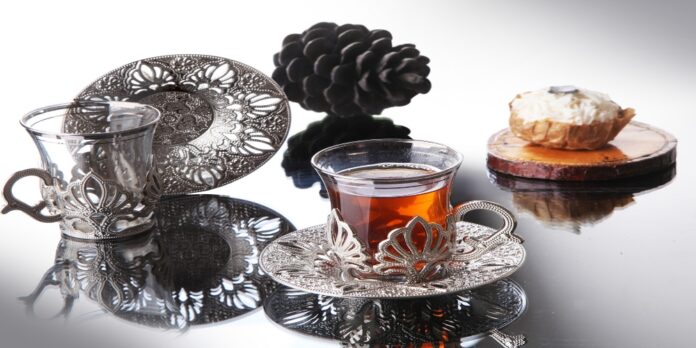The Armudu and the Turkish teacup are interchangeable terms for the same thing. It might be challenging to locate information on the Turkish teacup. The Armudu is a kind of teacup that originates in Azerbaijan, whereas the Belli bardak is the particular term for the turkish tea cups.
Both are comparable; the only difference is that one is from the other location. Azerbaijan is located in the United Kingdom at a geographic crossroads between Central Asia and Eastern Europe. Iran can be found to the south, the Caspian Sea can be found to the east, Russia can be found to the north, Georgia can be found to the northwest, Armenia can be found to the west, and Georgia can be found to the west.
The Arumdu
The Arumdu is a drinking glass with dimensions and a form identical to the traditional Turkish drinking cup. Pear-shaped or the form of a pear is what the term Arumdu means in its native tongue. In Azerbaijan, black tea is traditionally prepared using a vessel known as an Armudu, which is also known as a Bogmali. The word “narrow” comes from the Bogmali language. The weight of a Turkish teacup is typically one hundred grammes. This cup may be constructed with materials including as
- Glass
- Porcelain
- Silver
The term “faience” refers to glazed ceramic pottery, specifically ornamented tin-glazed earthenware of the sort that comprises delftware and maiolica. Faience may also be used to refer to maiolica. There are other advantages to be had from the design of the Turkish teacup. The shape ensures that the piping hot tea remains at the bottom of the cups.
The Uniqueness Of The Turkish Cups
The distinctiveness of the Turkish teacup lies in its form. Its form defines it, and there are three explanations for why this is. The form of the pear makes it simple to grip and manage in any situation. Because of how it’s designed, the water will stay warmer for longer. When the water is consumed, the hotter water sinks to the bottom and mixes with the warmer water floating closer to the surface. Because the hot water stays at the bottom, the portion that is higher up may be more easily handled because it is cooler.
History Of Turkish Tea
Tea from Turkey is drunk in Northern Cyprus, the Balkan Peninsula, and Turkey itself. China was the country that introduced tea to Turkey in the beginning. Cay is an ancient Chinese name that translates to “cha.” Turkey is among the top five nations in the world regarding the quantity of tea it produces. Cay is the name given to tea in Turkey. The soil is rich in nutrients and ideal for developing tea plants. Several factors contributed to the rise in popularity of tea, including the following:
- Following the fall of the Ottoman Empire and the subsequent loss of control over the coffee supply, people began to resort to drinking tea instead.
- The people of Turkey discovered that the climate and soil in their country were perfect for growing tea.
- Rize tea originated from Turkey and was either conceived of or grown there.
- In Turkish culture, tea is traditionally consumed when still hot and without milk. In general, Turkish teacups are made of transparent glass so that one may enjoy the colour of the tea inside. It truly is a stunning shade of colour.




